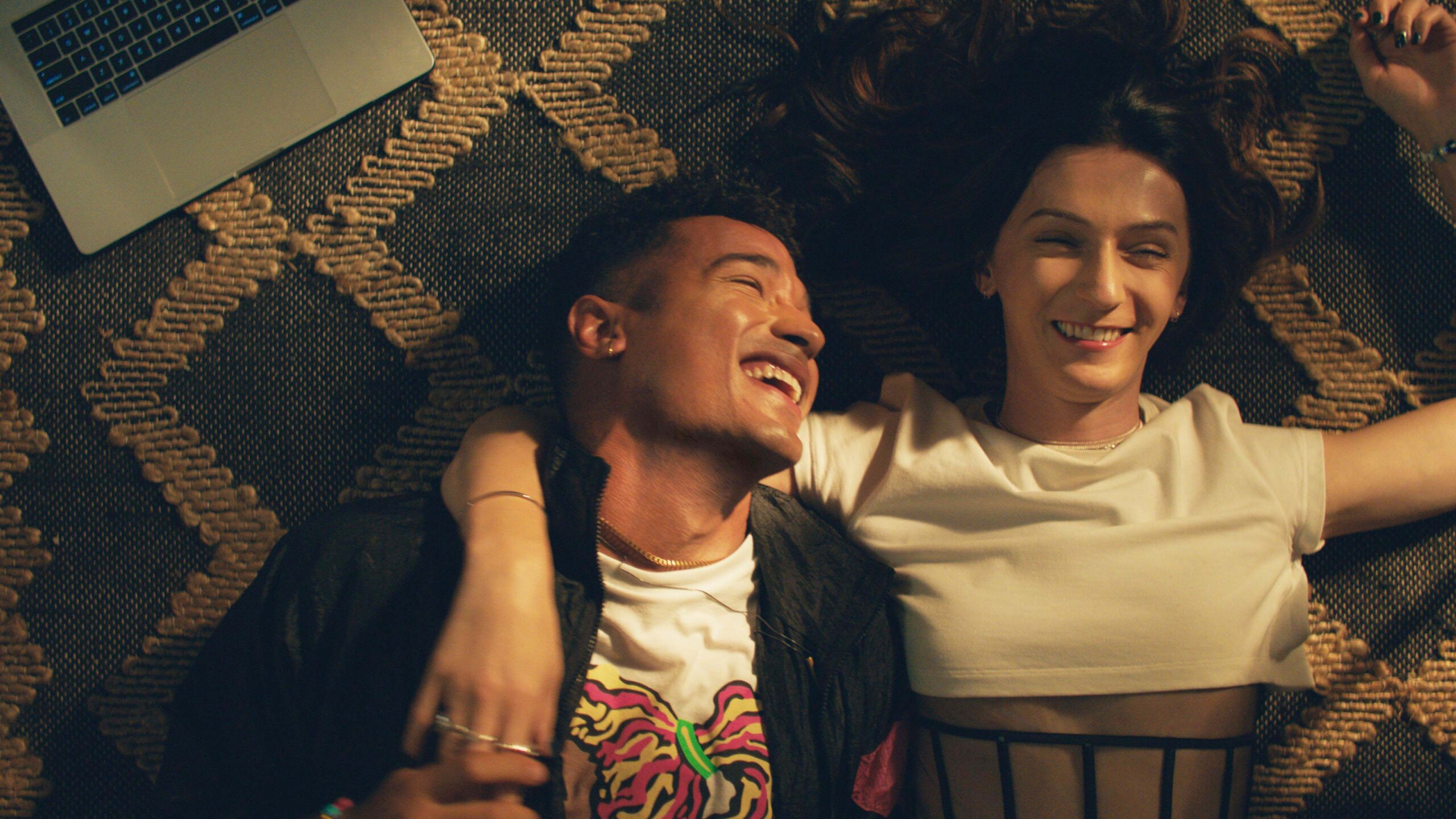Sometimes less can be a whole lot more. And sometimes, more is more is more is more.
The new Queer as Folk, which this week premiered all eight episodes of its first season on Peacock in the U.S. and will air on Showcase in Canada, is an exercise in the maximalism of queerness. Canadian director Stephen Dunn (indie fave Closet Monster) throws the kitchen sink (and the oven, and the toaster, and the fruit basket, and the junk drawer, and some glitter, and some tears and some safety pins) into his reboot of Russell T. Davies’s beloved 1999–2000 U.K. series, which had already been remade into a 2000–2005 U.S. series.
Unlike recent reboots like The L Word: Generation Q, this is an entirely new story and setting, with no characters carrying over from the Manchester-set original series or the Pittsburgh-set U.S. follow-up. Instead, a modern group of queers navigate sex, trauma, love and identity in the New Orleans scene—though fans of the original will know to be on the lookout for call-back Easter eggs and the series’ characteristically horny sex scenes.
At the series’ centre is Brodie (Devin Way), who has returned to the “Big Easy” after dropping out of med school. There’s also his best friend Ruthie (Jesse James Keitel), a high school teacher navigating new parenthood with her partner Shar (CG). Add into the mix Brodie’s lawyer ex Noah (Johnny Sibilly), brother Julian (Ryan O’Connell) and one of Ruthie’s students, Mingus (Fin Argus), and you start to get a sense of how broad this cast is. That’s not even addressing the icons in the room, with both Juliette Lewis and Kim Cattrall making the most of supporting roles as parent of Mingus and parent of Brodie/Julian, respectively.
The original’s sexuality and irreverence is still there, with each episode boasting its fair share of bass-thumping bed-thumping and nudity (the tone is made clear from the series’ very first moment, with the last four letters of streaming service Peacock getting a definitively cheeky underline during the opening credits).
Halfway through the pilot, a tragedy echoing the real-life 2016 Pulse nightclub shooting shakes the entire cast, and its impact lasts throughout subsequent episodes. Dunn said he consciously worked to avoid trauma porn in depicting the event, and even consulted with Pulse survivors before writing the story.
“What you’ll see in Queer as Folk is the honest truth of what it is like to go through something like that and how it’s not this saintly victim tragedy story. These are real people and they’re not victims,” he told The Hollywood Reporter. “They survived a tragedy, and they are human beings whose lives were completely turned upside down after this. And this community all responded in completely different ways.”
Capturing the community response after something like the Pulse shooting is noble, and it comes through most successfully in small moments that serve almost as satirical commentary on public reaction to trauma, like when the main characters calling out an “evil Pete Buttigieg” lookalike who starts a fundraiser with the exact sort of cheesy campaign name you’d expect. But too often those small moments get lost in the show’s efforts to cover everything and tackle everything, as the moving parts of all of these characters orbit one another and the tragedy—the pivot from the levity of that joke to the solemnity of mourning the shooting victims is likely intentional whiplash, but whiplash nonetheless.
The show’s maximalism has both its benefits and problems. On the positive side, criticisms of the original’s very (hot) white, very cis, very gay cast of characters are rightly addressed, with this version featuring a new (and still incredibly hot) roster of people representing a vast spectrum not only of LGBTQ2S+ identities, but race and ability, as well. This leads to nuanced storylines around everything from sex while disabled to transition and biological parenthood. And some of those stories really soar, particularly the development of Ruthie as a partier, partner and parent.
“I hope people can look at Ruthie and love her because of her flaws,” Keitel told Xtra in an interview. “I think it’s very rare we see a trans character who is deeply problematic and so flawed and makes mistakes left and right. [I love/appreciate/welcome] having the opportunity to play someone who is messing up and is trying to be an adult.”
In both their performances and lead-up promotion for the show, the young cast is obviously excited to step into the legacy of the original.
“Everybody had the chance to come to work and be themselves and not have to think that they need to hide or not,” CG said in an interview with Xtra. “It was just a really precious moment of open work that bled into the lives of us and in the lives of the people in the show.”
Argus, who plays gender nonconforming teen Mingus, told Xtra that the original 1999 show was groundbreaking merely for having explicit queerness at all. “That is sort of the spirit that we’re tapping into with this modern iteration,” they say. “It can include underrepresented communities like the trans and non-binary community, the disabled community and also have it be a cast of racially diverse people.”
Yet throwing all of these complex and interesting characters into one eight-episode series has its limits. By trying to serve every storyline and character, the rich characterizations viewers might be hoping for can get lost in the shuffle, and the tone can vary wildly from scene to scene. Many of the characters feel underserved or rushed through emotional beats, particularly when it comes to working through their reactions to the nightclub shooting. The result is a mess (and I do mean that lovingly) of heavy and light storylines punctuated by on-point musical needle drops (a The Craft-themed drag performance set to Grimes is particularly memorable), dramatically lit sex scenes and quick jumps from jokes to big ideas.
Much of the queer media receiving praise at the moment has a distinctly singular focus. Joel Kim Booster’s effervescent rom-com feature, Fire Island, Disney+’s contribution to queer content, features at broad cast, but at its core it’s about race, privilege and pride within a very specific New York gay milleau. Netflix’s sweet British teen romance Heartstopper zooms in on the experience of navigating young love and finding yourself.
If those entries into the 2022 queer culture canon have been praised for their self-containment, Queer as Folk swings the other way, leaning fully into the maximalist and messy experience of being queer in ALL of its ways for all kinds of people. Narrowing down the focus of this Queer as Folk is a challenging task. It’s about trauma. It’s about life. It’s about love and sex and being horny on main. It’s about family. It’s about relationships after having kids. It’s about finding yourself. Does it all work? No. But I don’t think it needs to, if you’re willing to embrace the inherent soapiness. In that way, the series almost shares the most DNA with Generation Q.
Partway through the series pilot, Keitel’s Ruthie quips about her own messiness: “You can be trans and toxic; it’s called intersectionality, bitch.”
The reboot of Queer as Folk is a triumph exactly by the standards of that line. It’s intersectionality, bitch. And if you’re willing to wade through a mess getting to that intersectionality, then the ride is certainly worth it


 Why you can trust Xtra
Why you can trust Xtra


